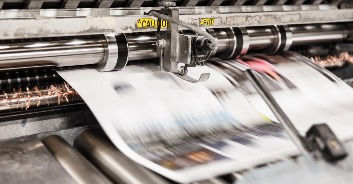Seven ways to create the perfect office posture
- Marcus Bowen
- 19 hours ago
- 3 min read
Eight million UK adults report chronic back pain that is moderate to severely disabling*, with back pain being the most common cause of work-related disability in people under the age of 45. From long hours sitting at desks to typing on a computer or poorly fitting office chairs, getting the right office furniture can have a huge impact on your office wellbeing. With happy offices also helping to boost productivity, getting the wrong furniture can have costly repercussions.
As May is Correct your Posture month, we look at top tips for building simple measures into your office routine to keep your staff happy and healthy.
Personalised support
It is important to remember that not everyone is the same. Having regular conversations with staff and personalising workstation areas will help to make sure that every member of staff feels the benefit. Don’t try to deliver set solutions as you could end up wasting resources rather than finding measures that actually work. Look at what each person needs and how you can offer ergonomically friendly solutions that work for them.

Schedule in regular reviews
Our bodies change over time, so it is important to regularly review workstations and see if they are still working effectively. Many people don’t speak up about niggles and aches just shrugging it off as one of those things. Left untreated though these minor discomforts can turn into greater problems. Encourage your staff to highlight issues so that you can tackle problems before they escalate. Schedule in a regular workstation audit for staff as part of annual reviews or sooner if they have had an injury, are pregnant or may need extra support. This way you can highlight problems and deal with them before they spiral.
Use ergonomic supports
The lower portion of your spine, or lumbar region, naturally curves inward which can create a gap between the lower back and the back support of some chairs. Supportive cushions or ergonomic-friendly pillows at the small of your back can help you to rest more comfortably. Not all solutions mean that you need to rebuy everything. There may be ways to adapt what equipment you have to provide more comfort.
Take the weight off
Look for ways to provide extra support not only for your back but your arms, legs and joints. Devices like wrist pads, foot props or kneeling chairs help to take the weight off your joints. Use wrist pads round the keyboard to rest your wrists while typing or install footrests so that you can prop your feet up while working for long periods of time.
Kneeling chairs also allow you to take the weight off your spine by cushioning your joints and offering improved spinal posture. Designed to all allow you to kneel forward, it automatically tilts the pelvis forward improving spinal alignment, digestion and breathing.
Change position
There is no reason to have a traditional sitting desk. Standing desks offer a great alternative to traditional desks. They allow you to stand and move more freely while in the office preventing sedentary sitting styles. Height adjustable the desks also allow you to get the best of both worlds and to swap between standing and sitting when required at the simple switch of a button.

Try active sitting
There are lots of different seating options available compared to conventional office chairs as well. Active sitting, or dynamic sitting, allows for some muscle use or movement. Ball chairs, kneeling chairs, wobble chairs, perch chairs and saddle chairs all provide a more active form of sitting. By taking away the back support they promote the use of torso stabilising muscles, which can strengthen your core and back extensors.
Create the right eye level
Monitor arms and supports can help to get your computer screen in the optimum position. Ideally your eyes should fall on the top third of the screen when looking straight forward. This prevents you from straining your neck or eyes, keeping your eyes level.
When it comes to office solutions there are always simple ways to make your working area more effective. Adaptions can be added to existing furniture, or you could create bespoke new workstations with newer styles offering advanced technology to provide added ergonomic benefits.
Whatever you choose the most important thing is to regularly review workstations and adapt to changes as they arise.
If you need any help finding the right solution, why not get in touch on 0121 430 9000 and our sales team will be happy to discuss through different options.
*according to the British Pain Society.















































留言